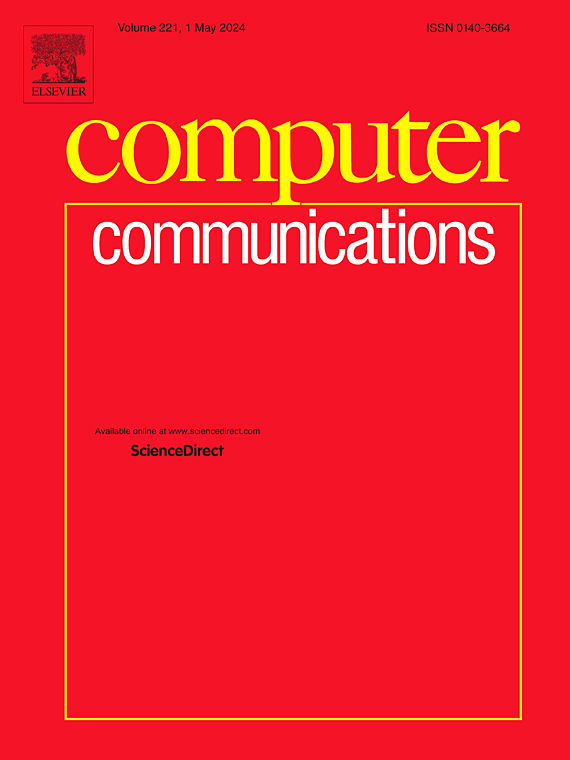DBVA:双层区块链架构,用于增强VANET车辆认证的安全性
IF 4.5
3区 计算机科学
Q1 COMPUTER SCIENCE, INFORMATION SYSTEMS
引用次数: 0
摘要
在智能交通系统(ITS)中,车辆自组织网络(VANET)对于改善道路安全和交通管理至关重要。然而,由于其动态和分散的性质,这些网络面临着重大的安全和隐私挑战。传统的身份验证方法,如公钥基础设施(PKI)和集中式系统,存在可伸缩性、单点故障和隐私问题。为了解决这些问题,本文介绍了DBVA,这是一种双层区块链架构,它集成了私有和联盟区块链,为VANET创建了一个强大且可扩展的身份验证框架。DBVA框架将公共事务(如交通数据)与私有事务(如身份和位置信息)分离到单独的区块链层中,从而保护隐私并增强安全性。此外,DBVA引入了严格的访问控制智能合约,用于分散撤销未经授权的车辆特权,最大限度地降低通信风险并增强系统弹性。具有周期性更新的动态假名身份生成机制通过将真实身份和假名身份分离到单独的区块链层来进一步增强隐私性。综合性能评估表明,DBVA显着提高了计算效率,将计算成本降低到18.34 ms,将通信开销降低到每条消息992位,并将存储需求最小化到仅50个单元,使其在当代方案中具有竞争力。广泛的安全分析和正式证明证实DBVA有效地满足所有基本的隐私和安全要求,使其成为增强VANET安全性、隐私性和弹性的健壮、可靠和可扩展的解决方案。本文章由计算机程序翻译,如有差异,请以英文原文为准。
DBVA: Double-layered blockchain architecture for enhanced security in VANET vehicular authentication
Vehicular ad-hoc networks (VANET) are crucial for improving road safety and traffic management in Intelligent Transportation Systems (ITS). However, these networks face significant security and privacy challenges due to their dynamic and decentralized nature. Traditional authentication methods, such as Public Key Infrastructure (PKI) and centralized systems, struggle with scalability, single points of failure, and privacy issues. To address these issues, this paper introduces DBVA, a Double-Layered Blockchain Architecture that integrates private and consortium blockchains to create a robust and scalable authentication framework for VANET. The DBVA framework segregates public transactions, such as traffic data, from private transactions, such as identity and location information, into separate blockchain layers, preserving privacy and enhancing security. Additionally, DBVA introduces strict access control smart contracts for the decentralized revocation of unauthorized vehicle privileges, minimizing communication risks and enhancing system resilience. A dynamic pseudonym identity generation mechanism with periodic updates further strengthens privacy by segregating real and pseudonymous identities into separate blockchain layers. Comprehensive performance evaluations reveal that DBVA significantly enhances computational efficiency, reducing the computational cost to 18.34 ms, lowering communication overhead to 992 bits per message, and minimizing storage requirements to just 50 units, making it competitive among contemporary schemes. Extensive security analysis and formal proof confirm that DBVA effectively meets all essential privacy and security requirements, making it a robust, reliable, and scalable solution for enhancing the security, privacy, and resilience of VANET.
求助全文
通过发布文献求助,成功后即可免费获取论文全文。
去求助
来源期刊

Computer Communications
工程技术-电信学
CiteScore
14.10
自引率
5.00%
发文量
397
审稿时长
66 days
期刊介绍:
Computer and Communications networks are key infrastructures of the information society with high socio-economic value as they contribute to the correct operations of many critical services (from healthcare to finance and transportation). Internet is the core of today''s computer-communication infrastructures. This has transformed the Internet, from a robust network for data transfer between computers, to a global, content-rich, communication and information system where contents are increasingly generated by the users, and distributed according to human social relations. Next-generation network technologies, architectures and protocols are therefore required to overcome the limitations of the legacy Internet and add new capabilities and services. The future Internet should be ubiquitous, secure, resilient, and closer to human communication paradigms.
Computer Communications is a peer-reviewed international journal that publishes high-quality scientific articles (both theory and practice) and survey papers covering all aspects of future computer communication networks (on all layers, except the physical layer), with a special attention to the evolution of the Internet architecture, protocols, services, and applications.
 求助内容:
求助内容: 应助结果提醒方式:
应助结果提醒方式:


